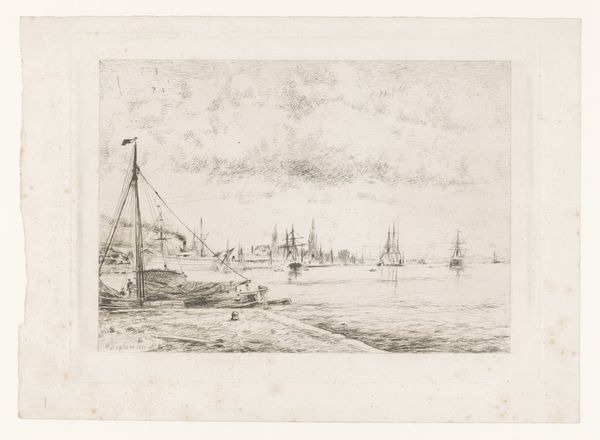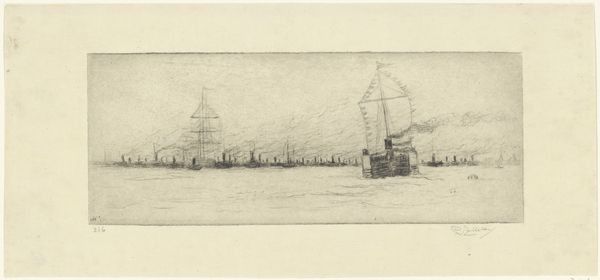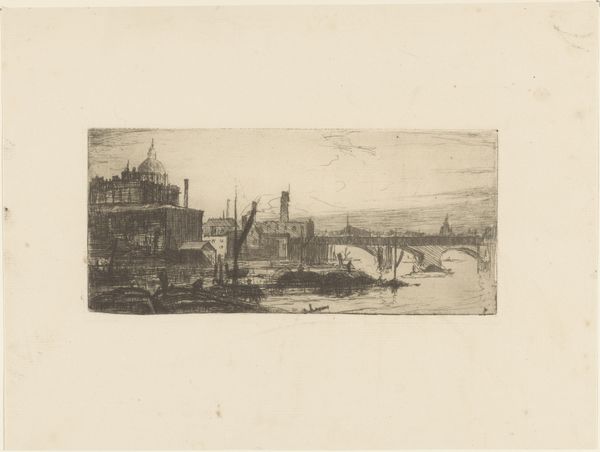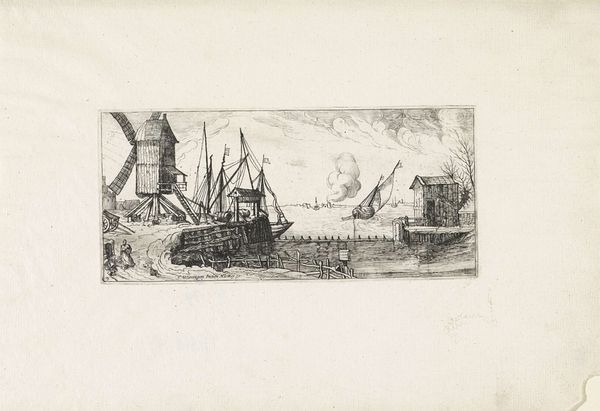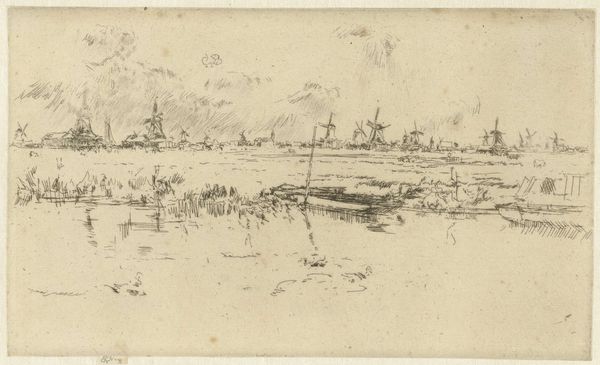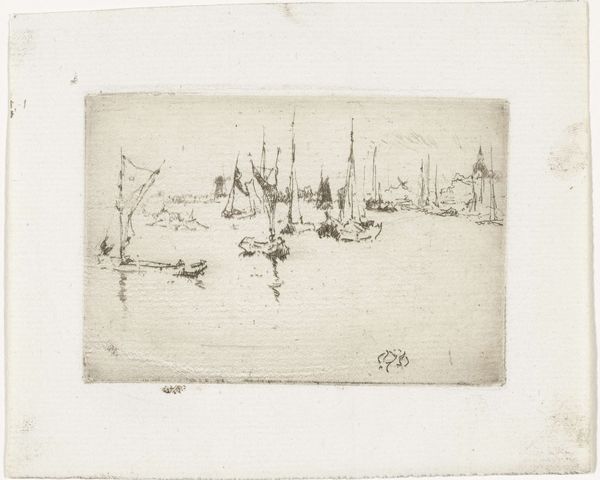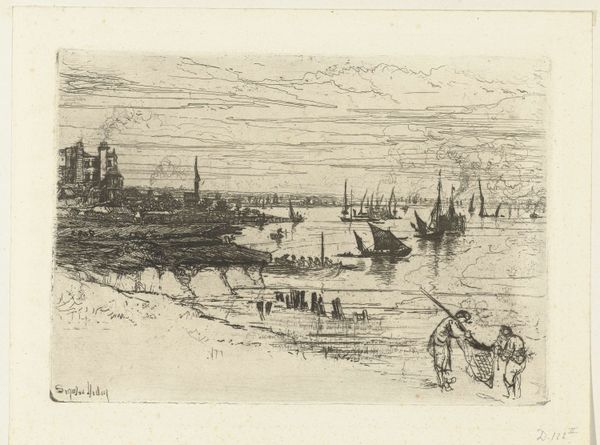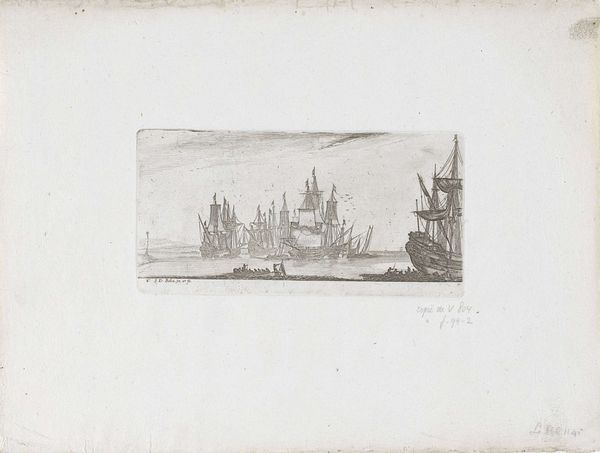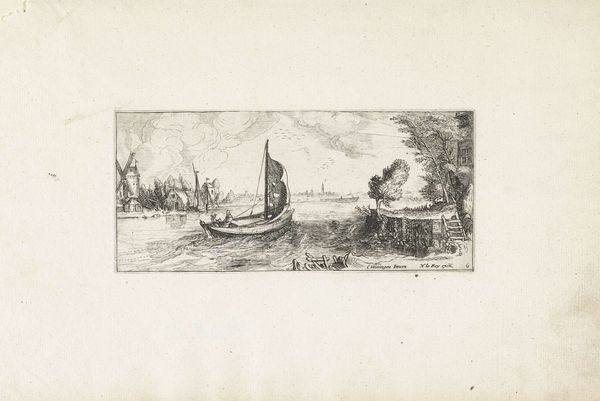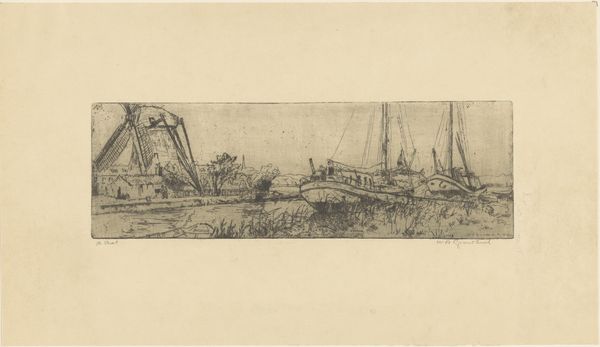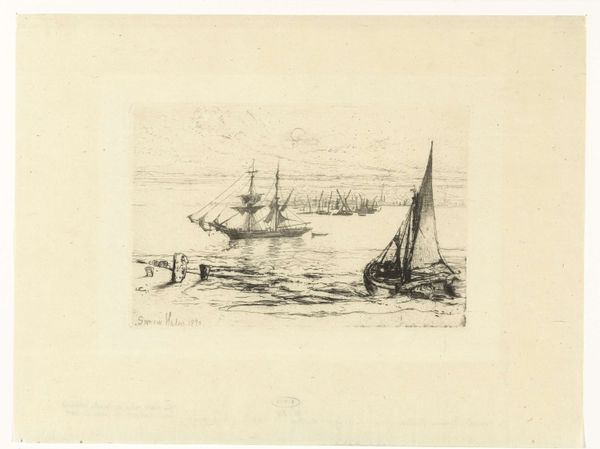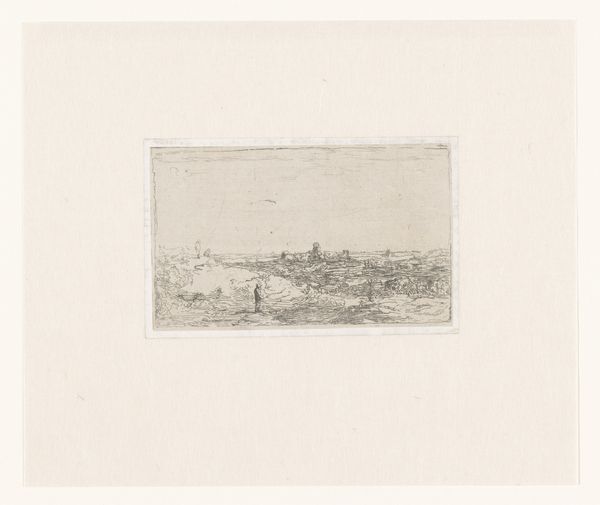
Dimensions: height 150 mm, width 227 mm
Copyright: Rijks Museum: Open Domain
Curator: Looking at "De Amstel" by Sir Francis Seymour Haden, created in 1873, now residing here at the Rijksmuseum. Editor: My immediate impression is one of delicate industry, a city waking up or settling in, captured with what seems like a spontaneous, almost urgent line. Curator: Indeed, and the context is crucial here. Haden was part of a revival of etching in the late 19th century. This image of Amsterdam's Amstel river reflects the era's burgeoning urban landscape and the attendant social stratification. Editor: Agreed. Etching lends itself so well to depicting texture and depth, it's clear in the various pen strokes used to construct boats, the cityscape in the distance. You really get a sense of the artist’s labor involved in the piece, each line etched intentionally into the plate. Curator: Absolutely, think about Amsterdam’s position as a major center for trade, even in 1873. That activity informs every stage of its creation, from Haden's perspective, influenced by industrialism's effect on labor to those people eking out existences near those canals. This work engages with Romantic notions of nature and city, but in a way that acknowledges the shifting social realities of the time. It’s also indicative of 19th-century capitalism and power relations within urban settings. Editor: Precisely. The use of etching and its capacity for mass production aligns it with broader shifts towards industrial means, so considering the printmaking processes inherent to its making underscores how it acts as a commentary, not just on industrialism, but on capitalism as a whole. Curator: Haden uses the cityscape as a mirror, forcing viewers to confront the lived realities and conditions experienced during that moment in time, asking audiences to assess what has been gained but also what has been sacrificed in this pursuit. Editor: A remarkable piece, when seen through that lens. Thanks for elucidating that so thoughtfully. Curator: My pleasure, understanding those forces helps reveal a powerful historical portrait that extends far beyond a simple river view.
Comments
No comments
Be the first to comment and join the conversation on the ultimate creative platform.
